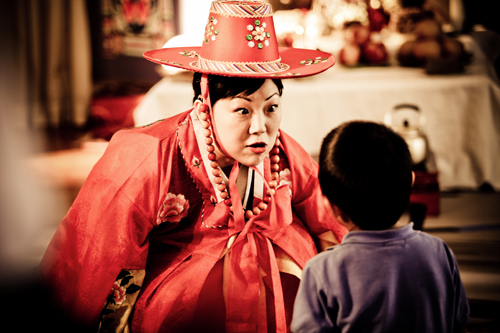Beyond beer and bratwurst
Portland State student Dan Hughes was driving from store to store as a Pepsi bottling merchandiser when he heard a radio interview that would change his life. As he listened to Rick Reilly of Sports Illustrated talk about the joys and frustrations of life as a sports writer, Dan says that something just clicked.
“I remember getting to the next store, and just sitting in my car,” he says, “and I thought, why not me?” Just days later, Hughes enrolled in a PSU sports writing class and started learning about his dream job.
A little over two years later, Hughes, 26, is preparing to release the fourth issue of his monthly local sports magazine, The Oregon Tailgater, to an expected circulation of over 15,000 readers in Oregon and Washington.
Hughes, a communications major, had always been a passionate sports fan, but until taking Professor Matthew Kauffman-Smith’s class, he had no experience in journalism. In the months after the class, Hughes landed a job answering phones in the sports department of the Salem Statesman-Journal.
“By not screwing that up, they started to give me a little more responsibility,” Hughes remembers with a laugh. “Eventually I would be given one page of the sports section to set up and that was my job for the night.”
Even though he was learning a lot, Hughes, a father of three, was working a full-time day job, and then commuting to Salem three or four nights a week. He knew he didn’t have time for a long apprenticeship into the world of sports journalism.
Hughes kept working, but he also tried new approaches. He covered the Oregon State Beavers for a sports web site. He mailed articles to the Oregonian, hoping to get his foot in the door. Finally, about a year ago he started developing the idea that would grow into the Tailgater magazine.
Hughes brought in an old friend of his named James Tracy, who is now the magazine’s marketing and financial director, and together they launched their first issue in September 2005. Hughes says that they had big plans for that issue, and it did come out on time, but he admits that they made some mistakes.
“We really messed up on that issue,” he says “but it did show us what we had to fix.” Blank pages in the magazine turned off advertisers, so Hughes replaced them with sports photos. Problems with the production left some articles hard to read, so Dan is negotiating with his printing company. Most embarrassing for Hughes, his last-minute attempts at editing left typos and errors that gave the magazine an amateurish feel.
Dan began the second issue of the Tailgater with a letter that apologized to his readers, and promised that the magazine would continue to improve. This month he put out his Trail Blazers preview issue, and Hughes thinks that quality has improved dramatically.
“This one is probably 90 percent on par with what we’re hoping for,” Hughes said. The new issue is 44 pages, with eight in color, and highlights two sit-down interviews by writer/editor Jeremy Lloyd with Trail Blazers Martell Webster and Jarrett Jack.
Last month, Hughes and Tracy agreed on a test-run distribution with The Newsgroup, a national company that distributes periodicals to retailers. This arrangement put copies of the Oregon Tailgater in Fred Meyer, Plaid Pantry and 7-11 stores from Tillamook to John Day, and from Albany to Longview, Wash. Hughes expects that they could see circulation increase to 30,000 by next year.
Advertisers have begun to respond to the increased circulation. Global Spectrum, the company that manages the Rose Garden arena, placed a full-color ad in a $1,200 space on the magazines back cover this month. Hughes and Tracy also recently began an advertising partnership with the Portland LumberJax, the professional indoor lacrosse team that will begin their first season in January.
Despite these positive steps, Hughes laughs when asked about profits, and says that actual financial prosperity is still a ways off for the magazine. The writers and photographers, mainly friends Hughes made during his time at the Statesman-Journal and covering the Beavers, all work for free.
“They’re giving me the effort all month long, and I hope to be able to pay for that,” Hughes says, “but advertising revenue is really what drives the publication.”
Compared with the challenges of founding a monthly magazine with nothing but hopes and a good idea, finding more ads is just another hurdle for Dan Hughes to cross.
“When they looked at our initial circulation numbers, people would smile and say ‘Oh, that’s cute.’ That doesn’t happen so much anymore.”




